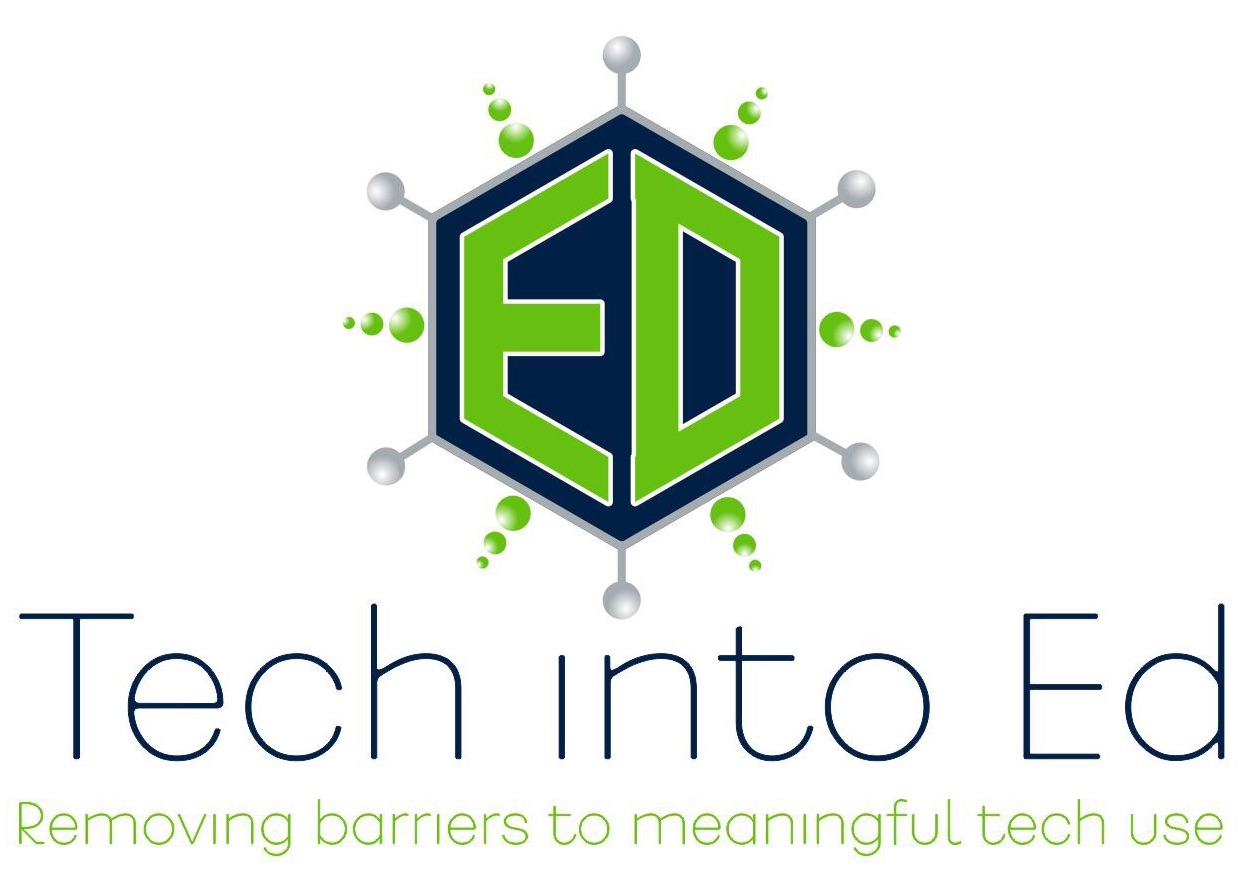
Removing barriers to MEANINGFUL technology use!
Making the Most of the Tools You Have
Tonight I'm going to be leading a webinar on the Intel Teach Live series called The Dangers of App Overload. If you would like to register to join and follow along live, here is the link: https://engage.intel.com/events/1269
Before I write any more, I want to say thank you to Naomi Harm (@naomiharm) and Vanessa Jones (@vkajones) for the opportunity to connect and share tonight. It is an honor! Thank you for the opportunity.
This blog post below is inspired by my reflection on and preparation for tonight's webinar.
Something I hear more often in my work than I would imagine, and something that forces me to reflect on the question of how well we are using the tools we have available to us for teaching and learning is this comment that I will sometimes get a version of from teachers:
question of how well we are using the tools we have available to us for teaching and learning is this comment that I will sometimes get a version of from teachers:
"So, I used to use this tool that I could use for lots of different projects. Is there an app for that now, or something that is just like it? It was called Photo Story. It was great."
Now, for those of you reminiscing about Photo Story, here is the reality. Photo Story has not been updated since 2006. As late as 2013 I can still find posts of people successfully installing and running Photo Story, but after that I'm not sure that there is quite as much success (except for those of you still rocking the XP).
If you don't know Photo Story, it basically allowed users to create a Photo Slideshow complete with instrumental music, transitions, voice overs, and text. By today's standards that maybe doesn't sound that impressive. Remember, this software was available at a time when merging and mashing media was, well, complicated.
Anyhow, the bigger picture is this. When I engage teachers in the question of why they loved Photo Story so much, the response is generally pretty consistent.
1 - It was easy to use.
2 - It was easily adaptable.
3 - It was reliable.
Teachers could learn the software once and then apply it to almost any media project or presentation. Want to tell a digital story? Use Photo Story. Want to create an engaging version of a science lab report? Use Photo Story. Want to impress your parents and students with photos and music from the spring concert? Use Photo Story.
The landscape looks VERY different today for teachers. Back then there was definitely a lot of software available at the time when Photo Story became popular. The trouble was that the software was most often not free (at least the well designed, easy-to-use stuff was not often free) and it was a laborious process to have it even installed on computers. Today, there is an ever-flowing stream of high quality, innovative, well designed free software, and it is all a button tap away from being installed on your tablet for use in your classroom. Apps are easy to acquire, easy to use, and there are generally several to choose between.
This leaves us with a new challenge, and it relates closely to the topic of digital distraction. It is incredibly easy to find new tools, use new tools, and replace new tools with newer tools.
Buggy app? Switch to a new one. Not fond of the advertisements? Switch to a new one. Clunky layout? Switch to a new one. Friends (or students) using something else? Switch to a new one. We are switching our tool set so frequently that the reality is we never really get to be truly proficient and productive with the tools we use.
So, maybe our new tools are easy to use. That's generally a given as no app can make it very long in a design-conscious marketplace.
Are they adaptable, though? Well, if Photo Story could be considered adaptable, so could nearly ANY creative app today. Whether it is iMovie, Pages, Notability, Explain Everything, the Google Apps Suite, or anything else you can imagine, the adaptability of the tool is in the mind of the user (and in my case, the mind of the teacher framing the instructional goals). These tools have the power to be used for a wide variety of instructional reasons.
The last question, though, is if these apps are reliable. And that is an interesting question. Software and apps today are more reliable than ever. Developers get more feedback from users today (or at least can get the feedback and data if they choose to) more quickly than at almost any other time in history. So, the apps themselves are very reliable. The follow-up question, though, is if we, the end users, are committing to the tools reliably. If we are fickle consumers and users of these apps, especially the apps that we use in our classrooms with students, then we will NEVER get to a point where we can determine the reliability or the adaptability of these powerful tools.
As educators, we must focus on how to make the most of the tools we do have readily and reliably available to us. Teachers are the most creative people I know. They can make meaningful lessons out of almost any set of resources. We now just need to slow ourselves, commit to the tools we do have, and then make magic happen in our classrooms.
I hope that in 10 years some teacher says to me, "Hey, do you know of any apps that I can use with my kids that is just like Explain Everything. That app was great. My kids did so much with that!"
Then again, in 10 years I hope that no teacher is still saying to me, "Do you know if Photo Story is still available for download?" :)
Pages and Keynote for the iPad: Productivity Meets Creativity
We have all used productivity software in the past (whether that be a Microsoft Office product or some other version of productivity software). We know what it can be used for. Many of us have even moved off of the old standards to a cloud-based productivity tool set (Google Apps for Education and others).
When we consider the touch pad interface of the iPad, though, and the elegant user interface that Apple includes in ALL of their software, we may want to think about re-incorporating productivity software that makes use of the iPad to make beautiful, hands-on presentations, brochures, letters, resumes, and learning modules. This presentation focuses on ways to use these products creatively to think outside the standard of productivity software, and how to put the iPad touch interface and camera to use in these projects. Bring your understanding of productivity software along with you and quickly progress up the SAMR ladder from basic substitution (you already know how to do this anyhow...you've used this type of software before) to Augmentation and possibly even Modification!
Each of the resources below are stored in Google Drive. Click on the links provided from the browser on your iPad (or Mac) and open in the appropriate apps.
Presentation Resources
 Pages and Keynote for the iPad - Presentation (Keynote Format)
Pages and Keynote for the iPad - Presentation (Keynote Format)
Pages and Keynote for the iPad - Presentation (PDF Format)
iOS Summit Wisconsin
Tomorrow is going to be an exciting day of learning for educators from across Wisconsin and neighboring states! The iOS Summit is coming to Waukesha, WI! We are eager to host and can't wait to see some of the amazing sessions, hear some of the inspiring ideas, and connect with some of the awesome educators that are putting the iPad to use to do amazing things in their classroom!
See you there if you are lucky enough to join us. The hashtag on Twitter -- #iossummit -- follow along as the day progresses.
What a wonderful way to spend a cold February day in Wisconsin. :)

Going Public: Yes, people are eager to read and view!
It was not long ago that the only way anybody would know about the powerful, amazing, creative work happening in our classrooms was if they would physically talk to us. While face-to-face connections are powerful, the ideas shared in those conversations only spread as far as the humans wish to take them.
 Many of us have at least signed up for a social network like Google+ or Twitter, but are we really leveraging it to share our work, our students thinking, and our classrooms with the world? Should we be?
Many of us have at least signed up for a social network like Google+ or Twitter, but are we really leveraging it to share our work, our students thinking, and our classrooms with the world? Should we be?
A few weeks ago I spoke with a parent that was very impressed with one of the videos she found on an SDW teacher's YouTube channel. "It is so nice to see what is happening in the classroom." As a parent myself, it feels like the events of my children's school days are somewhat of a mystery -- 8 hours of school summed up into a ten minute conversation hardly seems to cover the scope of what they experienced throughout the day. Parents are looking for some insight into what their children experience each day and the important work they are doing. Using these social networks and media outlets to share what is happening in our classroom is just one way we can offer parents a chance to investigate the great things that are happening instructionally.
Equally true, educators are scouring these social networks for ideas and examples of what is being done in other classrooms. I regularly search the archives of Google+ to see how we, as educators, are "going public" with our thinking, using the tools placed in our hands, and giving our students a voice that can be shared with the world. This was one of the great focal points of our summer institute work surrounding literacy -- giving students an authentic audience to share their thinking (making it visible). Like it or not, we carry this responsibility. Our students have plenty of opportunities to share "socially" with the world in informal settings online. This is our chance to show them how to productively use these media outlets to share academically, professionally, formally, and respectfully in order to make a difference!
Finding a new, authentic audience is not as time consuming as it once was -- we no longer have to gather an audience of parents or community/business leaders in advance, or make connections with teachers from across the country weeks before the unit of study.
These social networks are bringing an audience right to us. The devices in our hands, available in our classrooms, are built specifically with the intent of sharing with these audiences.
The question is not about who will read our thinking or view our students' work.
More importantly the question is: What will you and your students share? How will you "Go Public" with your thinking?
Key to Engagement: The Launch of a Lesson
I have led enough staff development to say this with certainty: No matter how much time I have available to teach adult learners, I can completely jeopardize the effectiveness of my entire time with them within the first few minutes of our meeting.
How? Failure to launch (not necessarily a reference to that Matthew McConaughey movie)!
Almost every teacher I have worked with has thoughtfully engaged in the instructional planning process. They have thoughtfully selected the lesson they deliver to students for some meaningful, often instructional purpose. Most teachers are even excited to share those lessons with their students. That tends to be a constant -- teachers plan and teachers believe in what they do with students.
So why does it so often happen that students (especially our older students) tend to disengage and find little relevance in these well thought out lessons so quickly and so consistently?
I Commit to Taking a Risk ... with Students
At The One Conference, a conference that our team recently organized in our district, the pinnacle of the day was something that could have been easily overlooked.
It was a display of poster boards with each school's name that read "I Commit..." The intent was that every staff member would take a moment to reflect on the day, to reflect on what the learning meant to their professional practice, and to make a commitment in writing to trying something new with their students before the school year ends. While seemingly small, the central message in this activity is that we need to convert our professional learning into professional action.
While seemingly small, the central message in this activity is that we need to convert our professional learning into professional action.
So many wonderful ideas, tools, and practices were shared at The One Conference. Thank you again to our many marvelous presenters who were daring enough to share with their colleagues. It is now our responsibility as professional educators to turn those engaging, meaningful, and creative ideas into something more substantial than just great ideas. We have to put them into practice with our students.
While many of us may feel we still do not have the "skills" needed to attempt these practices or using these tools on our own, that is not a good enough reason to avoid trying new things with our students. We can overcome that lack of technical skill or know-how with our willingness to step forward and take a risk. Risk taking is a deeply personal affair -- every person's tolerance related to risk varies dramatically. That's good -- it means we can try things that are just beyond our comfort level and still have it be a risk. When we take that risk, that's when we have an opportunity to learn and grow (and we give our kids an opportunity to learn and grow in new ways as well).
Many of us are starting to think about where we will implement our new strategies and tools we learned about and committed to at The One Conference this semester. Acknowledge that you are taking a risk and you are doing so for the benefit of your students. Thank you for your commitment to them. If you need support along the way, please be willing to reach out and connect. There are plenty of people eager to support you as you take that risk!
New Experience in Google Drive
With the adoption rate of Google Apps within our school district, I'm fairly certain most teachers are finding Google Apps for Education to be an advantageous addition to working, teaching, and learning.
However, as is OFTEN the case with Google, things change and they change quickly.
Google Drive has been reformatted to incorporate a new user experience that brings added benefits to the way we work with greater efficiency. The video below from Google outlines many of the new changes.

With any new change, though, there is opportunity for confusion as users get used to the new platform. Honestly, it seems as if the changes actually bring back some skills that many users were previously familiar with when searching for and selecting files on a computer, so these changes may be exactly what some users have been waiting for.
Take a moment to watch the video, switch over the new Drive experience (I did so by selecting the gear icon when I was in Google Drive and selected New Drive Experience), and start getting a bit more comfortable with the new layout, format, and toolset this version of Google Drive offers.
Additionally, if you have not yet realized it, Google Apps on the iPad has made some major alterations in the past few months that teachers should be aware of. New apps, including Docs and Sheets, are now the apps used to EDIT Google docs and sheets files, and Drive is the storage and management app. The video below is a pretty good overview of what these apps can do. Again, if you have not seen this yet, now would be a GREAT time to get familiar with these apps before the students return.

